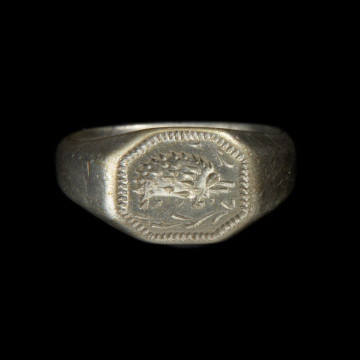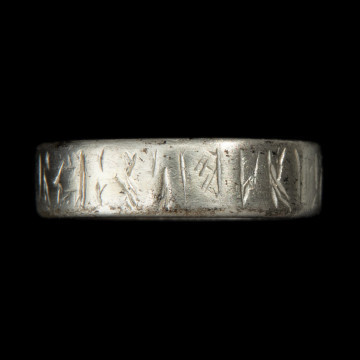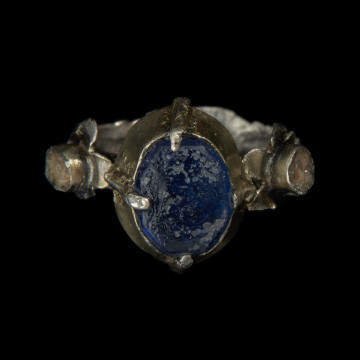
Signet ring with hedgehog
przełom XIV i XV wieku
National Museum in Szczecin
Part of the collection: Set of archaeological relics found in the Lublin Region
The silver ingot is part of a treasure of the 9th-century Arab coins (dirhams) from Lublin-Czechów. The treasure found in 1945 consisted originally probably of about a thousand coins, which were put into a clay vessel. The deposit also includes silver ornaments decorated with the granulation technique: a temple ring and a bead. Both bars and regularly broken dirhems served for payment purposes. The treasure was probably the capital of a merchant, who brought it from the area of today's Iraq (Baghdad?) through Kievan Rus. The oldest coins were minted in 711/712, the youngest in 882/883.
The silver ingot is rectangular in cross-section and rolled in a loop so that one arm overlaps the other. There are visible cracks on its surface. On one of the arms, a distance from the end of the bar, a notch is visible.
In the local market trade was natural exchange (goods for goods). When dealing with foreign countries, natural goods began to be replaced by a monetary equivalent. Initially, until the 10th century, the trade market was dominated by oriental bullion, mainly Arab coins, then the share of Western European coins increased. Polish coins became popular in the 12th century.
The treasure from Czechów is one of the largest deposits of Arabic coins discovered in the Polish lands. It testifies to the great importance of Lublin in long-distance trade.
Author / creator
Dimensions
cały obiekt: height: 12,2 cm
Object type
semi-raw material
Technique
cast
Material
silver
Creation time / dating
Creation / finding place
Owner
The National Museum in Lublin
Identification number
Location / status

przełom XIV i XV wieku
National Museum in Szczecin

przełom XIV i XV wieku
National Museum in Szczecin

National Museum in Szczecin
DISCOVER this TOPIC
National Museum in Lublin
DISCOVER this PATH
Educational path